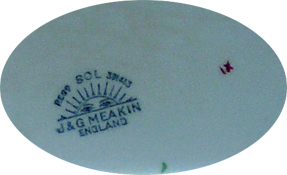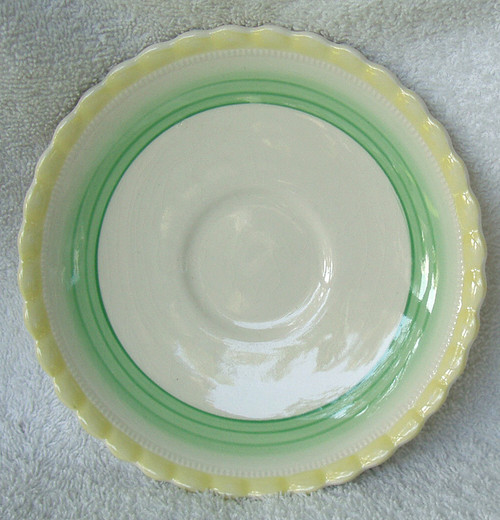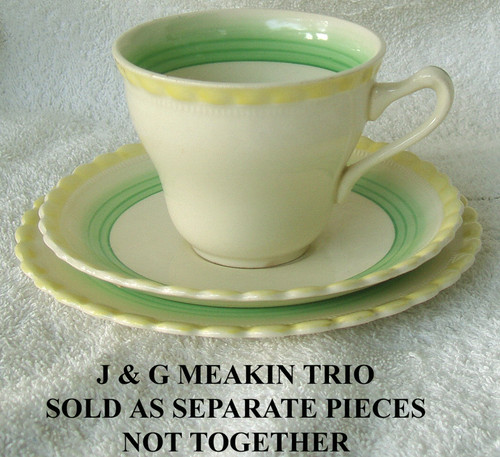HISTORY:
Yet more of our beloved, collected Meakin chinaware's, this piece was acquired by my wife back in the 1980's from a family estate.
The major factors that influenced my wife at the time was the hand painting, the SOL (Sun) backstamp and age ... she has since "moved on" to other pieces which are much older than this, although make no mistake, this tray is from the 1940's era, which makes it a sprightly 80+ years old!
J & G MEAKIN - Table Tray
Made in England
Circa 1940's (the SOL design was used from around 1912 until the 1960's and the registered number on the backstamp refers to the registered pattern although not necessarily this specific decoration because we have seen many different decorative designs (all being flowers though) using this same registered pattern number from Meakin)
Pattern name is unknown
Base ceramic is a creamy White
Opaque, meaning that you cannot 'see' through the ceramic material, this is earthernware not bone china.
The decorative design comprises one main depiction of multi-coloured flowers and three 'side' (much smaller) single or double flowers. Most striking is the vivid, bright colouring used for both the blooms and the foliage. The rectangular end 'tab' handles (for easy lifting) have hand applied Gold gilding, as has the topside of the rim.
DIMENSIONS:
235mm (9.25") length (including the end tabs) x 122mm (4.75") wide
Quite shallow at only 20mm (0.75") deep
Most suited to cold meats or sweets although with the crazing that has occurred (details below), she suspects that at some stage the tray has had something hot in it, a number of times.
BACKSTAMP DETAILS:
Makers mark printed on the base of the tray

Absolutely hand decorated, note that there are two different decorator's marks
COSMETIC CONDITION:
USED
CLEAN
NO cracks
NO chips
NO degradation of the decorations, both in colour and intensity - quite vivid!
NO significant scratching or scrapes to the central flat area of the tray
HOWEVER ...
As is often the case with 'older' earthernware', there is obvious crazing which has occurred to both the top and bottom glazing.
The topside glazing has actually stood the test of time quite well, you can see the hairline glaze cracks even when dry but there has been no ingress of dirt or bacteria which means practically no discolouration.
Unfortunately though, the underside is not so lucky (see the photograph) and at one end you can clearly see some discolouration UNDERNEATH the glaze in this area.
The tray has been carefully hand washed, dried and had our usual treatment of fine spray ISO alcohol to kill off any nasties that may be hanging about but the damage is done, the discolouration probably cannot be removed. We haven't tried it but I did read somewhere that Hydrogen Peroxide 'might' help lighting up this area but we are not 'game' to try this.









